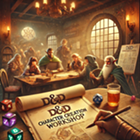Electronic Arts has established a remarkably high benchmark for their sports videogames. Players are usually modeled around real-world athletes. The games are presented like televised matches. But moments ago, while the game was still underway, dozens of small, faceless men were kicking a ball around my TV. The perspective from high above made everyone look like tiny action figures on an Astroturf tabletop. The advertisements for Yahoo and McDonald's were easier to see than the ball.
Players in 2006 FIFA World Cup meet in blurs of pixilated legs. The ball sticks to one of them. Then away they run, bouncing the ball on an invisible tether ahead of them. Only when goals are rebroadcast, complete with better textures and cinematic angles, can I see what happened when I scored, with nets twanging and goalies throwing up their hands in dismay. But even in tight shots and enhanced close-ups, players look identical. Only different skin shades and hairstyles distinguish them from one other.
I should be able to take control of David Beckham and do something un-Newtonian with the ball. Instead, I find myself in control of a team of look-alike, feel-alike players. Although there are lists of statistics for each player, none of them seem to be incorporated into the gameplay. Certainly the on-air commentators can't recognize a player with a low dribbling rating. They praise him as a "wizard" as he sprints towards the goal.
Worst of all, 2006 FIFA World Cup's controls never actually give me a sense of being in functional contact with the ball. The tackle button is the same as the shoot button, making me constantly switch my attention between defending and attacking. And although "possession is key," as the stodgy commentators remind me, the most accessible button on the videogame controller -- the one beneath my thumb -- is for passing. This results in plenty of unintentional fumbling around the pitch. It's the sort of videogame that works best for ghetto night gaming, when sobriety and fun are unimportant.
THE GOOD: Electronic Arts has at least given FIFA the EA Sports trademark treatment. So there's a hefty load of soccer statistics and bulk-quality electronica music appended to the game, though none of it actually makes the game more fun to play.
THE BAD: The feeble graphics are a result of trying to make a game for wildly different videogame systems. A game's technological limits are always set by the most primitive machine that can play it. That means owners of 360s and PCs can look forward to a year in which new sports games such as this one look like decrepit PlayStation 2 titles.
THE BOTTOM LINE: In 2006 FIFA World Cup, the world's most popular sport gets treated like EA's least loved videogame franchise.
















